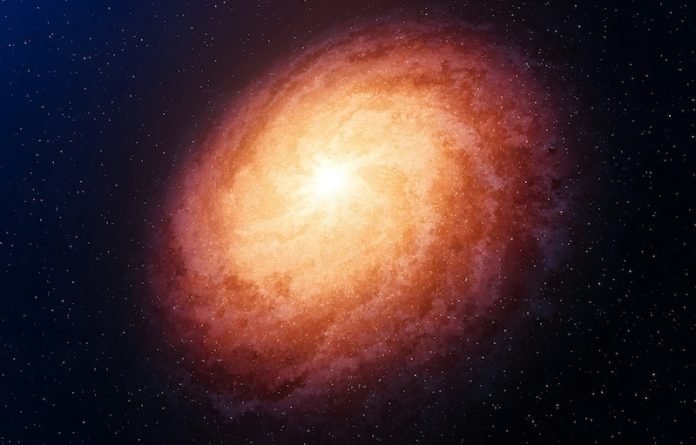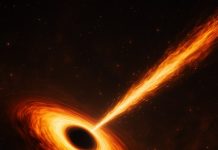
The James Webb Space Telescope (JWST), a marvel of modern astronomy, has been a game-changer in our quest to understand the universe’s infancy.
Among its latest revelations is the discovery of an extremely red, supermassive black hole from the early universe, uncovered by a team led by Dr. Lukas Furtak and Prof. Adi Zitrin from Ben-Gurion University of the Negev.
This discovery stands out not only for the black hole’s significant mass relative to its host galaxy but also for its obscured visibility behind a dense veil of dust, shedding new light on the evolution of such cosmic giants.
The detection was made possible through JWST’s examination of images from the UNCOVER program, which probed the galaxy cluster Abell 2744.
This cluster acts as a gravitational lens, magnifying distant galaxies behind it and bringing to light objects that would otherwise remain unseen.
Among the findings, three peculiarly compact and red objects sparked the interest of Furtak and Zitrin, leading to the hypothesis that they were witnessing a quasar-like object from when the universe was a mere 700 million years old.
Quasars, or quasi-stellar objects, are the radiant hearts of galaxies, powered by supermassive black holes voraciously consuming surrounding material.
This process emits immense radiation, making quasars some of the brightest entities in the cosmos. The object identified by the team exhibited unusual characteristics, including its extraordinary redness, suggesting it was cloaked in dust.
Further analysis confirmed the object as a supermassive black hole and allowed the team to measure its mass accurately.
The spectra obtained from JWST/NIRSpec data revealed the black hole’s emission lines, widened by the high-velocity gas in its gravitational grip. This provided not only confirmation of the black hole’s nature but also an unprecedented estimate of its mass.
The results were surprising: the black hole’s mass was found to be disproportionately large compared to that of its host galaxy.
This discovery challenges our understanding of the early universe’s black holes, suggesting a deviation from the growth patterns observed in more contemporary examples.
The precise mechanisms behind the formation and growth of these early supermassive black holes remain a subject of intrigue, with theories ranging from the remnants of stars to direct collapse scenarios.
This finding is part of a broader effort to understand the complex relationship between black holes and their host galaxies in the universe’s formative years.
As JWST continues to unveil “little red dots” and other active galactic nuclei, astronomers anticipate gaining deeper insights into these ancient cosmic puzzles.
The study, published in Nature, not only adds a crucial piece to the cosmic puzzle but also exemplifies JWST’s transformative impact on astronomy, enabling scientists to peer further back in time and with greater clarity than ever before.
The ongoing exploration of the universe’s dawn, powered by JWST, promises to unravel more of its earliest secrets, potentially reshaping our understanding of cosmic origins and evolution.
The research findings can be found in Nature.
Copyright © 2024 Knowridge Science Report. All rights reserved.



